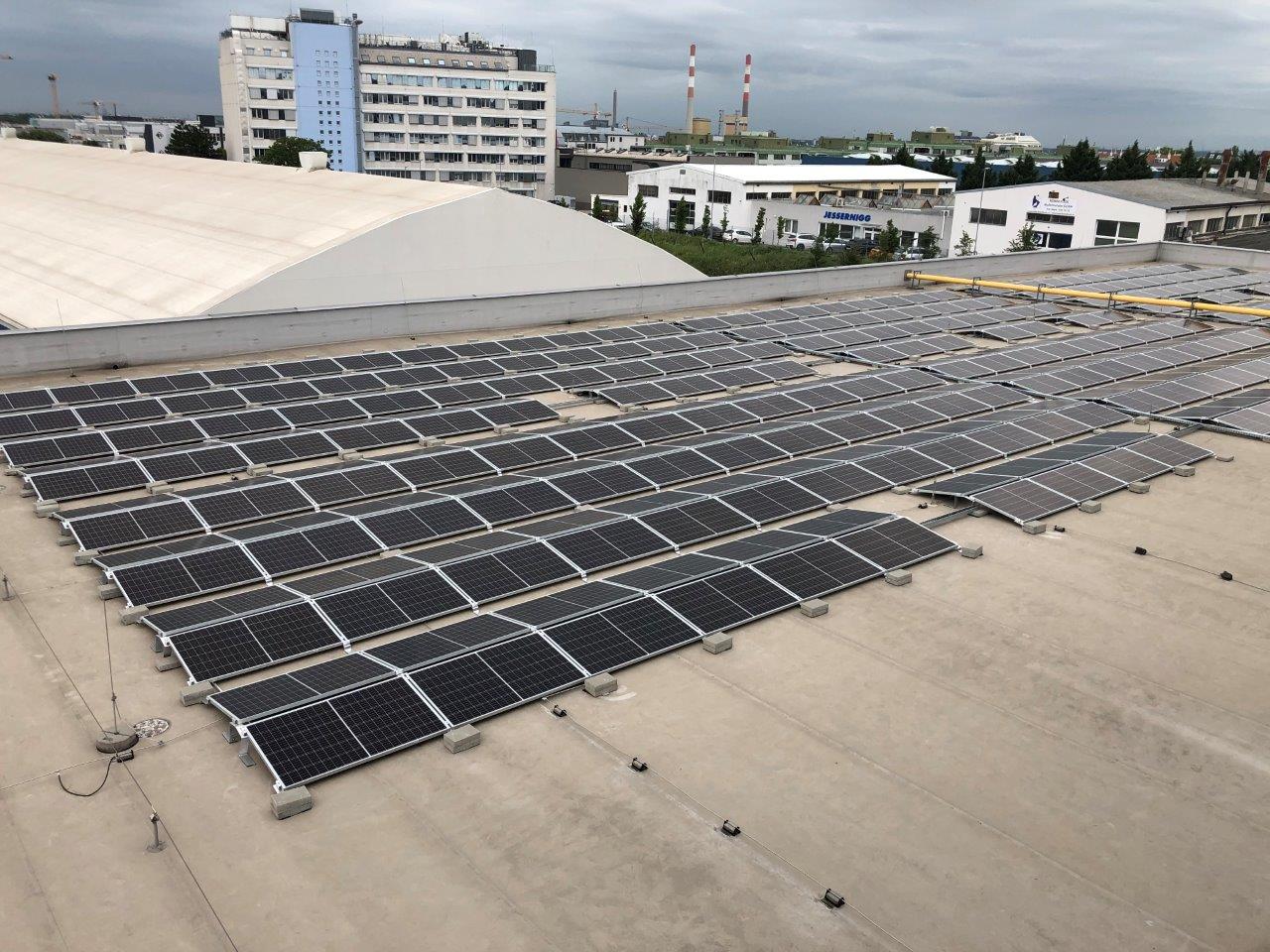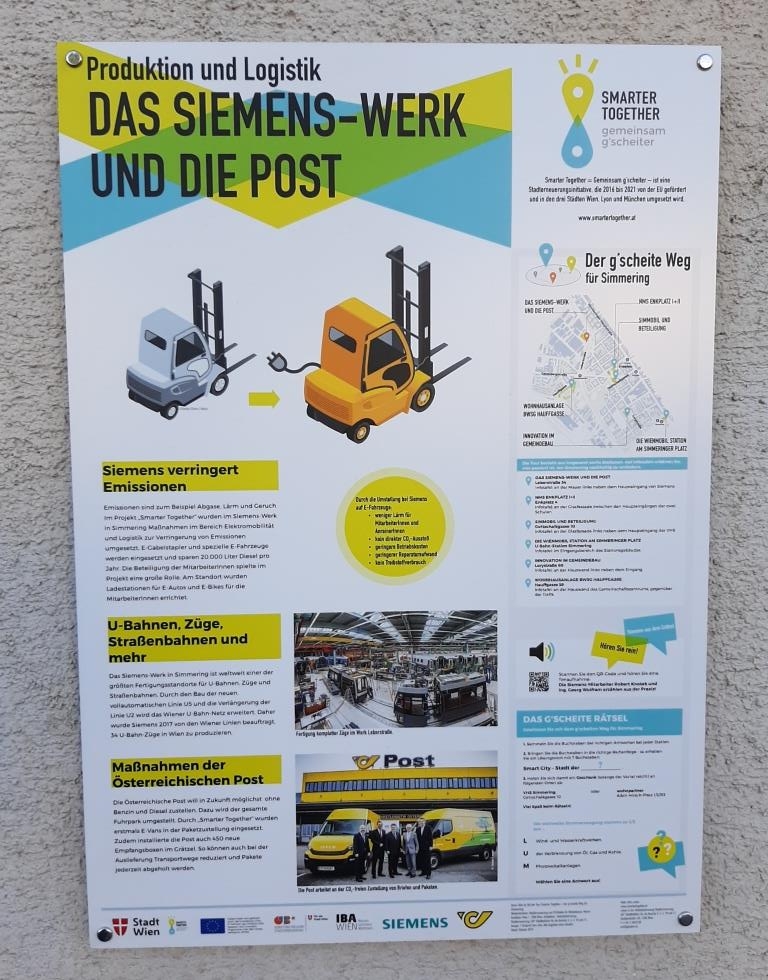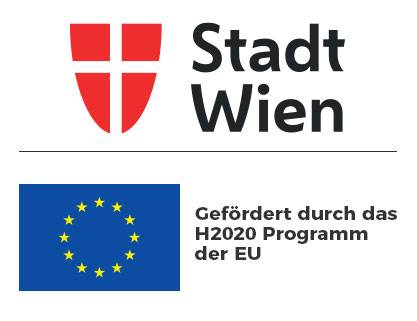Gut für die Umwelt und gut für den Standort Wien-Simmering
PV-Anlage von Siemens Mobility
Super News erreichen uns von unserem Projektpartner Siemens Mobility in Simmering. Soeben wurde eine neue Photovoltaik-Anlage (PV-Anlage) errichtet. Sie hat eine Leistung von 500 kWp.
Damit setzt Siemens Mobility seine Bemühungen für die Umwelt und für einen modernen Industriestandort fort, der auch in Zukunft Arbeitsplätze sichert.
Die Errichtung von PV-Anlagen wurde ursprünglich schon im Rahmen von Smarter Together geplant, nun wurde sie verwirklicht.
Damit sind auch das Projektgebiet von Smarter Together, Simmering und Wien noch attraktiver geworden: für die Wirtschaft, für die Menschen und für die Umwelt!
Bilder sagen mehr als 1000 Worte!
Siemens Mobility, PV-Anlage Simmering
Themenweg-Infotafel beim Eingang zum Siemens Mobiliy-Betriebsgelände in Simmering
Hier geht's zum Themenweg
Für Sie recherchiert: Was bedeutet kWp?
Die Abkürzung kWp steht für „Watt peak” bzw. “Kilowatt peak“ und bezeichnet die Leistung (Watt) einer Photovoltaikanlage. Kilowatt-Peak (kWp) steht für die (elektrische) Spitzenleistung. Gebräuchlich sind auch die Steigerungen wie Megawatt peak und Gigawatt peak (mehr dazu hier).
Peakleistung (Wp, kWp)
Eine Photovoltaikanlage setzt sich aus zahlreichen kleinen Solarzellen zusammen. Deren maximal mögliche Leistung unter Standardbedingungen wird als als Peak-Leistung definiert. Sie wird in Watt gemessen und als Wp (Watt, Peak) angegeben (Hinweis: 1000 Watt = 1 Kilowatt).
Mit 1 kW Peak (kWp) lässt sich 20 Jahre lang der Stombedarf decken
Eine Photovoltaik-Anlage mit einer Spitzenleistung von 1 kW Peak (1 kWp) produziert rund 20 Jahre lang mehr Strom, als eine Person benötigt. Mit einer 1 kW Peak-Anlage werden bei der durchschnittlichen Sonneneinstrahlung in Deutschland rund 1000 kWh Strom pro Jahr erzeugt. Der Strombedarf einer Person eines 4-Personen-Haushaltes liegt aber nur bei größenordnugsmäßig 875 kWh.
Für 1 kWp werden rund 7-8 Quadratmeter bzw. 10 Quadratmeter Photovoltaik-Fläche installiert (kristalline bzw. Dünnschicht-Solarzellen) (mehr dazu hier).
English Summary / Zusammenfassung in Englisch:
PV system from Siemens Mobility
Good for the environment and good for the industrial site in Vienna-Simmering We received great news from our project partner Siemens Mobility in Simmering. A new photovoltaic system (PV system) has just been built. It has an output of 500 kWp. Siemens Mobility is thus continuing its efforts for the environment and for a modern industrial location that will secure jobs in the future. The installation of PV was originally already planned as part of Smarter Together – now it has been realized. This also made the project area of Smarter Together, the district of Simmering and Vienna again more attractive: for the economy, for the people and for the environment! Pictures say more than 1000 words! What does kWp mean? The abbreviation kWp stands for „watt peak“ or „kilowatt peak“ and denotes the power (watt) of a photovoltaic system. Kilowatt peak (kWp) stands for the (electrical) peak power. Increases such as megawatt peak and gigawatt peak are also common. Peak power (Wp, kWp) A photovoltaic system is made up of numerous small solar cells. Their maximum possible output under standard conditions is defined as the peak output. It is measured in watts and specified as Wp (watts, peak) (note: 1000 watts = 1 kilowatt). With 1 kW peak (kWp) the electricity demand can be covered for 20 years A photovoltaic system with a peak output of 1 kW peak (1 kWp) produces around 20 years more electricity than a person needs. With a 1 kW peak system, the average solar radiation in Germany generates around 1000 kWh of electricity per year. The electricity requirement of a person in a 4-person household is only around 875 kWh. Around 7-8 square meters or 10 square meters of photovoltaic area are installed for 1 kWp (crystalline or thin-film solar cells).
Bojan Schnabl




 Smarter Together, MA 25, Foto Zsolt Marton
Smarter Together, MA 25, Foto Zsolt Marton